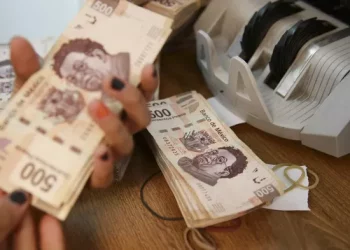The Indian Rupee (INR) experienced a decline on Friday, driven by renewed demand for the US Dollar (USD) and heightened geopolitical tensions following a terror attack in Pahalgam, Jammu, and Kashmir. The currency‘s weakness was further exacerbated by uncertainties in the region, as India and Pakistan exchanged diplomatic rhetoric over the attack.
Despite these challenges, optimism surrounding ongoing US-India trade talks may offer some support to the Indian Rupee. Currently, the 26% reciprocal tariff imposed by the US on Indian exports is on a 90-day suspension, which will expire on July 8. However, India still faces a 10% tariff under the US’s general trade policy. Additionally, rising Foreign Institutional Investor (FII) inflows may provide a buffer against the INR’s decline, with investors watching for the final reading of the US Michigan Consumer Sentiment index later today.
As tensions between India and Pakistan escalate, the Indian Rupee remains under pressure. According to a Reuters poll, the Reserve Bank of India is expected to reduce the Repo Rate to 5.50% by the end of Q3, down from the 5.75% forecast in March. India’s economy is projected to grow 6.3% in 2025-26 and 6.5% in 2026-27, slightly revised down from previous growth expectations.
When asked about the impact of US tariffs on business sentiment, 60% of economists indicated a negative or very negative effect on India’s economic outlook. In contrast, 14 economists described the impact as neutral.
In response to the Kashmir attack, Pakistan has announced a series of retaliatory diplomatic measures, demanding evidence to substantiate India’s claims of Pakistani involvement. Meanwhile, US Treasury Secretary Scott Bessent has suggested that India may become the first country to finalize a bilateral trade agreement with the US to avoid the impact of President Trump’s reciprocal tariffs.
Minneapolis Federal Reserve President Neel Kashkari expressed concerns about potential layoffs due to economic uncertainty, warning that businesses could struggle to navigate the current climate.
Looking at the technical outlook for the INR, the USD/INR pair remains bearish. The exchange rate is trading below the critical 100-day Exponential Moving Average (EMA), signaling a continued downward trend. The Relative Strength Index (RSI) stands at 38.35, below the midline, indicating further potential downside. Initial targets for the pair are set at 84.85, with further support seen at 84.22, the low from November 2024. If the currency pair breaks the 100-day EMA resistance at 85.82, it could rise to 86.45, marking the upper boundary of the current trend channel.
Related Topics:
























